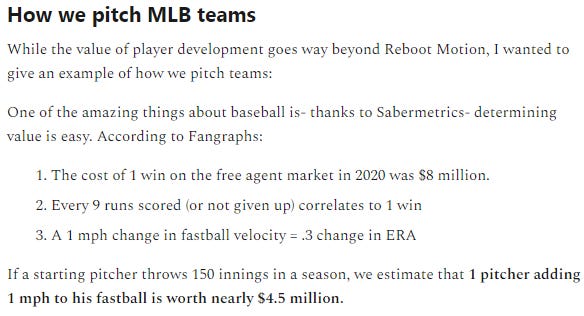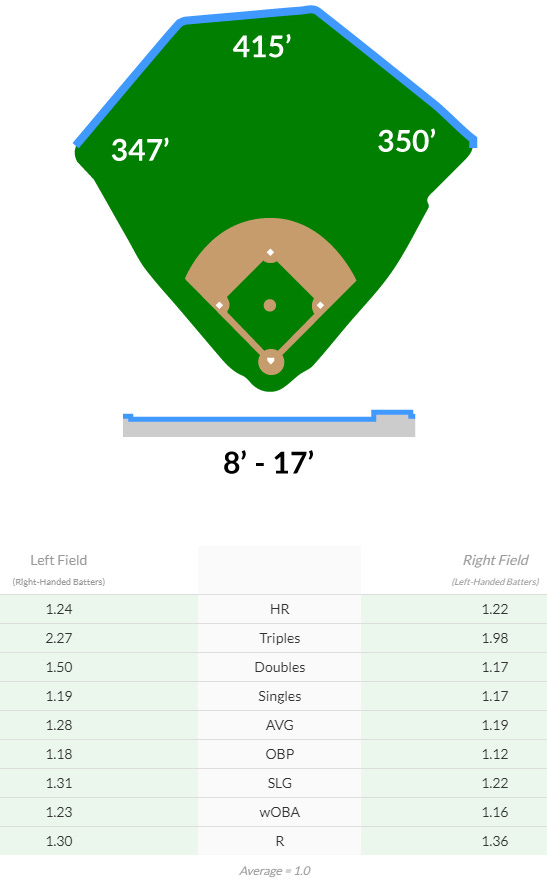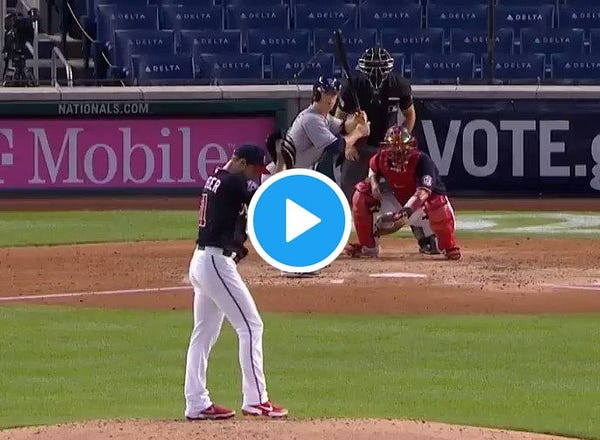Every week I write an email discussing what I learn launching and growing Reboot Motion. If you would like to receive it directly in your inbox, subscribe now.
In Reboot Motion’s midyear review, I wrote about our desire to dominate baseball biomechanics before moving to other sports. The idea is by owning a niche, we can deeply learn our customer’s pain points and provide the ideal product. We can then repeat the playbook elsewhere.
I referenced Sarah Tavel’s Hierarchy of Marketplaces then, and I will do it again now. She argues “the goal early on is NOT to grow transactions, but rather to create meaningfully more happiness than any other substitute.”
In order to make our customers- MLB organizations, top level academies, etc- incredibly happy, we need to solve their problems. And these problems are not limited to developing pitchers.
To make out customers happy, we need to offer services to help develop all their athletes. In other words, to make them happy, we need to enter hitting.
Why is hitting a pain point?
Simply put, more baseball players hit then pitch. And while we believe biomechanics has a lesser effect in hitting than pitching, the effect is still big.
First, why is it less?
Hitting is reactionary. Someone can have the best biomechanics in the world, but when he’s up against this Max Scherzer pitch, it may not matter.
So why is biomechanics still so important?
While we do not believe biomechanics is the major driver on if good contact is made, we do believe it has a tremendous effect on what happens when good contact is made.
How can we quantify this effect?
So far, we are not sure.
Remember, with pitching, this was easy- and we laid it out in a post a few weeks back:

With hitting, we have not found such easy calculations yet. And part of that has to do with extra variables.
With a pitcher, it is easy to notice when someone who topped out at 93 mph has reached 96 mph.
For hitting, two swings are rarely the same. It is impossible to know if that deep fly-out would have been a home run with a more efficient swing.
However, we do know two things:
Better biomechanics means hitters will drive the ball further when they make good contact (we are not sure how much further yet).
And we know driving the ball further is good.
How do we know this? We looked at another factor that makes the ball go further: playing in altitude.
The Mile High Effect
According to Swish Analytics, hitters do better in Coors Field regardless of type of hit, direction of hit, and statistical measure. It is the only ballpark where hitters do better no matter what.
(I encourage people to click the link above and view every ballpark. Some are advantageous to left field, some to right. Some are better for home run hitters, some for contact hitters. Coors is the only place better for every single hitter, every single time.)

In 2019, the average team scored 4.83 runs per game. And Coors field had a run factor of 1.394. In other words, playing in Coors Field is worth 1.9 runs per game per offense (4.83 * .394).
If we do the same math we did in my post on player development, we realize this is the equivalent of 16 WAR or $144 million (if, of course, your offense was playing in Coors Field while your pitchers were pitching elsewhere).
What we are ready to say
We are not ready to make a case for how much value Reboot hitting brings- and we will not claim it is the same as hitting a mile above sea level.
But we are ready to say the following:
Making good contact is the hardest part.
When elite hitters do make contact, they do better the further the ball travels.
Our next steps
We are at the beginning for hitting. To make the product better, we need to keep talking with coaches, learning what resonates, and improving the product.
And to make the product more marketable we need to better quantify what we already know. Hitting the ball further is better.
While we will not claim to drive the $144 million in value a team would get by hitting at altitude, we would like to see if we can get 10% or 20% of this value. If so, that is a great start.
And who knows. Maybe, some day, we can give every hitter their own personal Coors Field.





